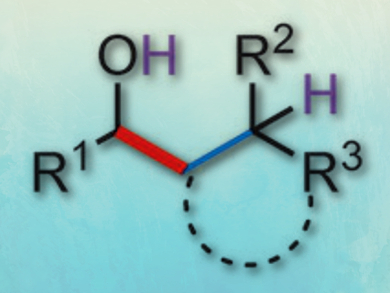Catalytic reductive coupling reactions of π-unsaturated molecules with carbonyl compounds are important C–C bond forming methods in organic synthesis. However, traditional processes that use metallic reductants generate stoichiometric amounts of metallic waste. Recently developed (transfer) hydrogenative couplings using hydrogen or hydrogen donors as terminal reductants can circumvent this problem, but often require expensive noble metal catalysts, such as rhodium and iridium.
Mengchun Ye, Nankai University and Collaborative Innovation Center of Chemical Science and Engineering, Tianjin, China, and colleagues have developed a highly selective iron-catalyzed transfer hydrogenative coupling of aldehydes with alkenes that proceeds under mild conditions. The catalyst is FeBr3 and the hydrogen donor is the inexpensive propan-2-ol. The team proposed a mechanism that proceeds through a Prins/hydride-transfer pathway, in which the C–C coupling occurs via an oxocarbenium intermediate, followed by a hydride shift to give the product
The catalytic system was tested with previously challenging couplings. Reactions between unactivated alkyl and aryl aldehydes with simple alkenes, such as styrene derivatives and α-olefins, were possible using this approach. The reactions proceeded with high regioselectivity, good to excellent yields, and good functional-group tolerance.
- Iron-Catalyzed Regioselective Transfer Hydrogenative Couplings of Unactivated Aldehydes with Simple Alkenes,
Yan-Long Zheng, Yan-Yao Liu, Yi-Mei Wu, Yin-Xia Wang, Yu-Tong Lin, Mengchun Ye,
Angew. Chem. Int. Ed. 2016.
DOI: 10.1002/anie.201602130




